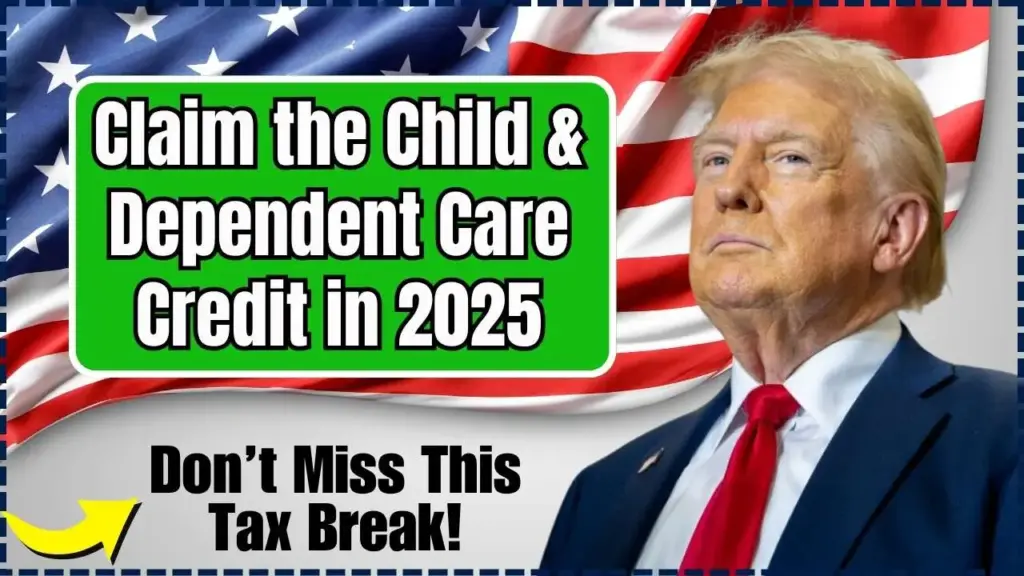For millions of working parents, the Child and Dependent Care Credit remains one of the most practical ways to lower tax bills. While its structure is modest compared with rising care costs, it still provides meaningful relief for eligible families.

Tax experts emphasize preparation: collect records early, confirm provider information, and consult reputable tax software or professionals.
“The credit doesn’t solve America’s child-care crisis,” said Maag, “but for many families it’s an important piece of the puzzle — and too valuable to overlook.”
Table of Contents
Key Facts at a Glance
| Key Fact | Detail |
|---|---|
| Maximum eligible expenses | $3,000 (one dependent) / $6,000 (two or more) |
| Credit percentage | 20% – 35% of eligible expenses |
| Filing requirement | Form 2441 attached to Form 1040 |
| Average claim (2023 data) | ≈ $580 per family |
| Non-refundable | Yes (credit cannot exceed tax owed) |
What the Child and Dependent Care Credit Is — and Why It Exists
The Child and Dependent Care Credit (CDCC) is a long-standing U.S. tax benefit that helps working parents and caregivers offset part of the cost of care. It was introduced in 1976 to encourage workforce participation among parents and later expanded under several administrations.
The credit briefly became fully refundable in 2021 under the American Rescue Plan Act, but Congress allowed that expansion to expire. Since then, the CDCC has reverted to its traditional structure — non-refundable and capped at $3,000 or $6,000 in expenses. According to the Tax Policy Center, roughly 12 million households claimed it in 2023, mostly middle-income families.
“Many parents overlook this credit simply because they assume it only applies to day-care centers,” said Elaine Maag, a senior fellow at the Urban-Brookings Tax Policy Center. “In fact, it can apply to babysitters, after-school programs, and in-home caregivers, as long as the care allows the parent to work.”

Who Qualifies
To claim the CDCC for 2025, taxpayers must meet specific eligibility requirements outlined by the Internal Revenue Service (IRS).
- Work Requirement: Expenses must enable the taxpayer (and spouse, if filing jointly) to work or actively seek employment.
- Qualifying Person: This includes a child under 13 or a spouse/dependent who cannot care for themselves.
- Income Rule: The taxpayer and spouse must have earned income, except in cases of full-time students or disabled spouses.
- Provider Limitation: Payments cannot be made to a spouse, your child under 19, or anyone you can claim as a dependent.
- Filing Status: Married couples must file jointly to claim the credit.
The care provider’s Taxpayer Identification Number (TIN) must be listed on the return, usually obtained through IRS Form W-10.
How Much Can Be Claimed
Taxpayers may count up to $3,000 in expenses for one dependent or $6,000 for two or more when computing the credit. The credit equals 20 % to 35 % of eligible expenses, depending on Adjusted Gross Income (AGI). Families with lower incomes receive a higher percentage. For most middle-income earners, the credit averages around 20 %.
Example: A family paying $5,000 in after-school and summer-camp care for two children with a 20 % rate could claim $1,000 in credits.
If the taxpayer participates in a Dependent-Care Flexible Spending Account (FSA) through their employer, those benefits reduce the eligible expense base for this credit.
Claim the Credit
Parents claim the CDCC by completing IRS Form 2441 (Child and Dependent Care Expenses) and attaching it to their Form 1040. The form requires:
- Provider information (name, address, and TIN).
- Total eligible expenses paid.
- Adjustments for employer-provided dependent-care benefits.
- Computation of the allowable credit based on AGI.
Taxpayers must keep supporting documentation — invoices, receipts, employer FSA statements, and proof of the qualifying person’s residence. The IRS recommends retaining these for at least three years.
According to IRS Topic 602, the CDCC is non-refundable, meaning it can reduce tax owed to zero but cannot generate a refund.
Common Mistakes to Avoid
Tax professionals say most disallowed claims stem from documentation errors. Nina Olson, former IRS National Taxpayer Advocate, told Reuters that parents often forget to verify the provider’s TIN or claim costs for ineligible services such as private school tuition.
Other pitfalls include:
- Claiming care for a child who turned 13 before the expense occurred.
- Mixing educational costs (e.g., kindergarten tuition) with care expenses.
- Double-claiming expenses also paid through an FSA.
- Filing as “married filing separately.”
Olson advises taxpayers to “double-check that the expense’s main purpose is care, not education, and that every provider’s information is accurate.”

Related Links
$2,000 Tariff-Funded Stimulus Checks Could Arrive by November – Are You on the List?
$3,357 + $839 in VA Disability Benefits? Find Out If You Qualify & When You’ll Get Paid
Policy Context and Outlook
The CDCC’s value has not been adjusted for inflation since 2001. As child-care costs continue to rise, economists argue that the credit covers a shrinking share of actual expenses.
A June 2025 analysis by the Tax Foundation found that the average cost of full-time child care in U.S. metro areas exceeds $11,000 annually — nearly double the maximum expense cap eligible for the credit. Lawmakers on both sides of Congress have discussed raising the cap or making the credit refundable again, but no consensus has emerged.
In August 2025, the Biden Administration reiterated support for expanding family tax relief, though legislative prospects remain uncertain ahead of the 2026 budget negotiations.
FAQs
Can I use both a Dependent-Care FSA and the CDCC?
Yes, but you cannot “double-dip.” Expenses reimbursed through an FSA reduce the maximum eligible expense amount for the credit.
Is summer camp eligible?
Only day-camp expenses qualify if the main purpose is care. Overnight camps are excluded.
What if I’m self-employed?
You may claim the credit as long as you have earned income and meet the other eligibility rules.
Can divorced parents claim the same child?
Generally, only the custodial parent — the one with whom the child lived more than half the year — may claim the CDCC.



















